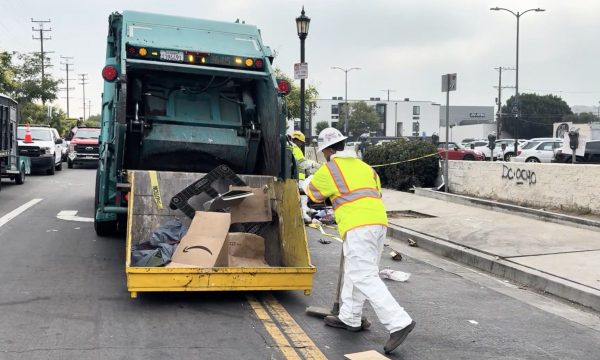In a timeframe perhaps not too far away, veterinarians will be able to tell a client how likely his dog is to develop heart disease, allergies or hip dysplasia.
The rapidly developing world of genetic testing of companion animals will be highlighted at the American Veterinary Medical Association Convention to be held August 5-9 in San Antonio.
"Veterinarians are becoming savvier in understanding genetic predispositions," said Dr. Jerold Bell, a small animal practitioner and adjunct professor at the Tufts University Cummings School of Veterinary Medicine. "Many are already using genetic testing in diagnostics to provide counseling and treatment for their patients, but we need to stay up to date."
All schools of veterinary medicine include some form of genetics training, he says, but continuing education courses like those at the AVMA convention are vital to learning the magnitude of change in genetics testing.
Past genetic research required a large sample size, 50 affected animals and 50 'normal' animals, and would cost hundreds of thousands of dollars. Today, one affected animal can be diagnosed, its DNA sequenced and a disease-causing mutation identified that can benefit entire breeds. "The price tag of gene searching and genetic testing has dropped exponentially," said Dr. Bell, "making it easier to breed healthier pets and minimize the chance of common disorders."
Most early progress in genetic testing in dogs and cats has been made in the field of ophthalmology. Although hip dysplasia and diabetes may occur more often and affect all breeds, most eye diseases are caused by single genes and have no cure or treatment. They have to be bred out of existence, and therein lies the reason why genetic research on companion animals has enjoyed a long-term relationship with the eye.
With documented breed-improving results, it is no wonder responsible breeders have jumped on the genetic testing bandwagon. They, too, can keep veterinarians informed about what disorders are occurring in their own animals. "In my view, the most important aspect of breeding is to produce healthy pets," said Dr. Bell. "As the pet-owning public becomes more aware of genetic testing, its accuracy and availability, there is a definite increase in seeking out health-conscious breeding and actively selecting dogs or cats free from predictable genetic disease."
Breed-specific disorders like exercised-induced collapse in Labrador Retrievers or hypertrophic cardiomyopathy in Main Coon cats are identifiable by genetic testing, which is typically just an easy cheek swab away. But what about the many pets with a blurred lineage? Can genetic testing help these "Heinz 57" animals of uncertain ancestry?
"Companies are using diagnostics to determine what breeds exist in a mixed-breed dog," said Dr. Bell. "Some companies take it one step further and also tests for genes controlling body conformation and known disease causing mutations." Other resources provide a list of testable disorders and treatments, most notably the WSAVA Canine and Feline Hereditary Disease Test Database hosted on the PennGen website at the University of Pennsylvania School of Veterinary Medicine.
Many mutations are ancient and first occurred in dogs and cats prior to separation of breeds. They are not discerning and can affect every breed and mixed-breed patient. But, Dr. Bell cautions, just because a dog has a genetic marker, it doesn't mean that it will develop the clinical disease. To that point, degenerative myelopathy (DM) is a complexly inherited disease that causes hind-end paralysis in older dogs. Many breeds like the Wire Fox Terrier have a high frequency of a testable DM liability gene that is required for the development of clinical disease. However, no Wire Fox Terrier has ever been diagnosed with this condition, and the breed likely does not carry other genes necessary for the development of DM.
"We need to relate what we know about the genetics at hand and properly use that information," said Dr. Bell. "Even in predisposed breeds, the DM liability gene test by itself is poorly predictive of developing the disease. Why would you tell an owner that her dog may or may not develop that disease when it's 10-plus years old and negatively impact her relationship with that pet? This is a pitfall that we need to avoid in our client-patient relationships."
According to Dr. Bell, genetic testing is indispensable in veterinary medicine and encompasses much more than DNA tests. Any diagnostic test or observation that identifies genetic predisposition to disease gives veterinarians the opportunity to improve the lives of their patients. For instance, hip dysplasia is found in all dog breeds, and studies have found that it is 20% to 40% heritable. Veterinarians can gently palpate the hips of young dogs and determine whether or not they are lax and prescribe preventive measures accordingly. These can include maintaining lean body weight, avoidance of hip compaction activity prior to skeletal maturation and pre-emptive surgery in severe cases.
"In the 20 years since clinical genetic testing has been available in dogs and cats," said Dr. Bell, "over 150 mutations have been identified for genetic disorders, and we can now predict occurrences and intervene to prevent or lessen its effect in many of our patients."
To learn more about the AVMA Annual Convention, visit www.avmaconvention.org.














